By Sarah Edmands Martin.
After being awarded a U.S. Fulbright to create an artistic work blending archival research, digital design, teaching, and faculty exchange at the University of Bergen, I arrived in Bergen in January to begin my affiliate position with the Center for Digital Research and the department of Digital Culture.
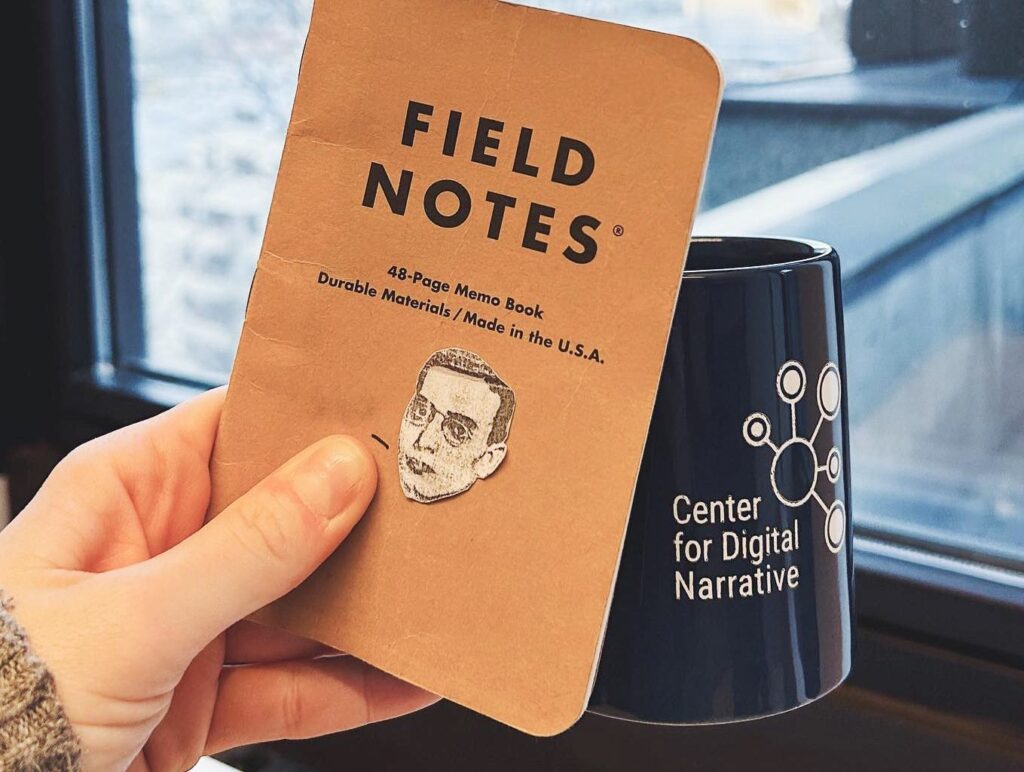
My research and creative practice often take place at the intersection of visual communication design, critical fabulation, and media aesthetics. Expanding design’s role beyond the commercially driven motivations of the twentieth century, I adopt a speculative design approach defined by asking “what if?” through the material rhetoric of everyday things. I apply a broad range of analog processes such as typesetting, illustration, printing, and installation alongside digital processes like programming, animation, projection mapping, augmented reality, multilinear storytelling, and 3d modeling to visualize how the intersection of design, science, and culture can better serve collective futures.
With the Fulbright, my goal was to encounter socio-political structures through the design of folk tales, fairytales, and/or fables. Coming from the perspective of Western, American fairy tales that have, since the mid-twentieth century, been historically embedded with hegemonic meta-narratives and normative behavioral prescriptions, I was interested in working with folktale archives that might challenge these tropes.
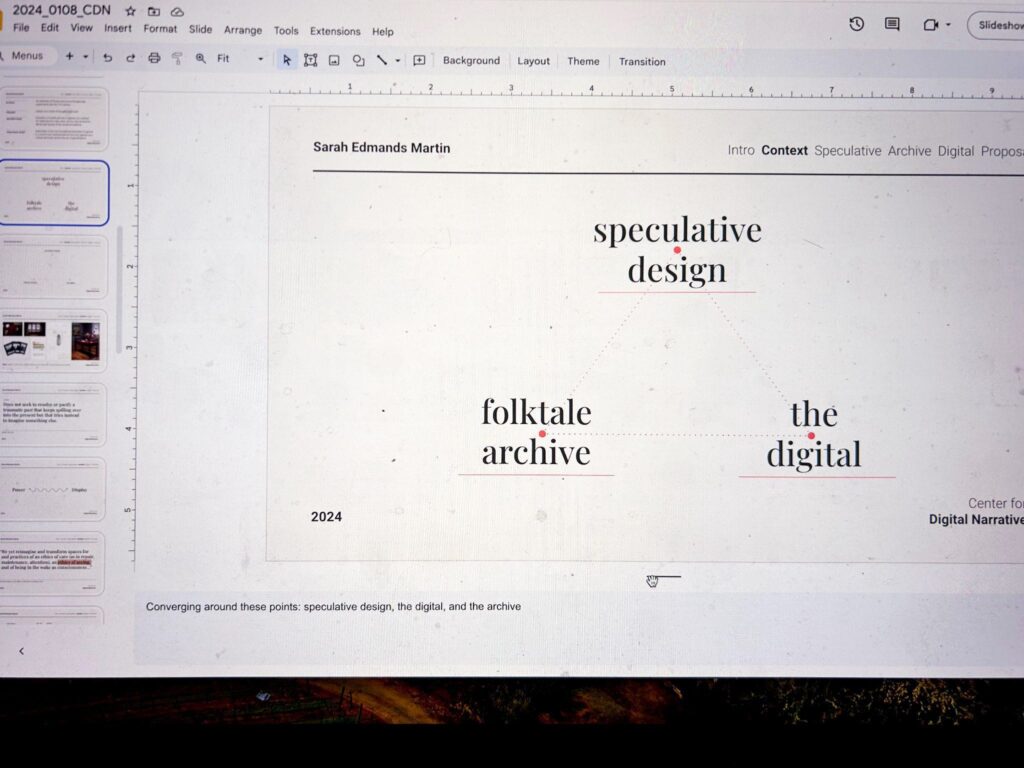
To get started, I worked with a number of archives at the University of Bergen. The first, located under the purview of the Center for Digital Narrative, was the Electronic Literature as a Model of Creativity and Innovation in Practice (ELMCIP) Knowledge Base. Here was an archive of digital interventions often bridging the disciplines of e-literature, visual communication design, game design, and web design. Significantly, the creative works in this archive rarely explored folklore as a creative subject: of the almost 4,000 artistic works in the ELMCIP archive (at the time of this writing), only .0003% engage with fable, folktale, or fairytale. While the ELMCIP is a comprehensive collection, I hoped my project would intervene as an important, yet missing, perspective.
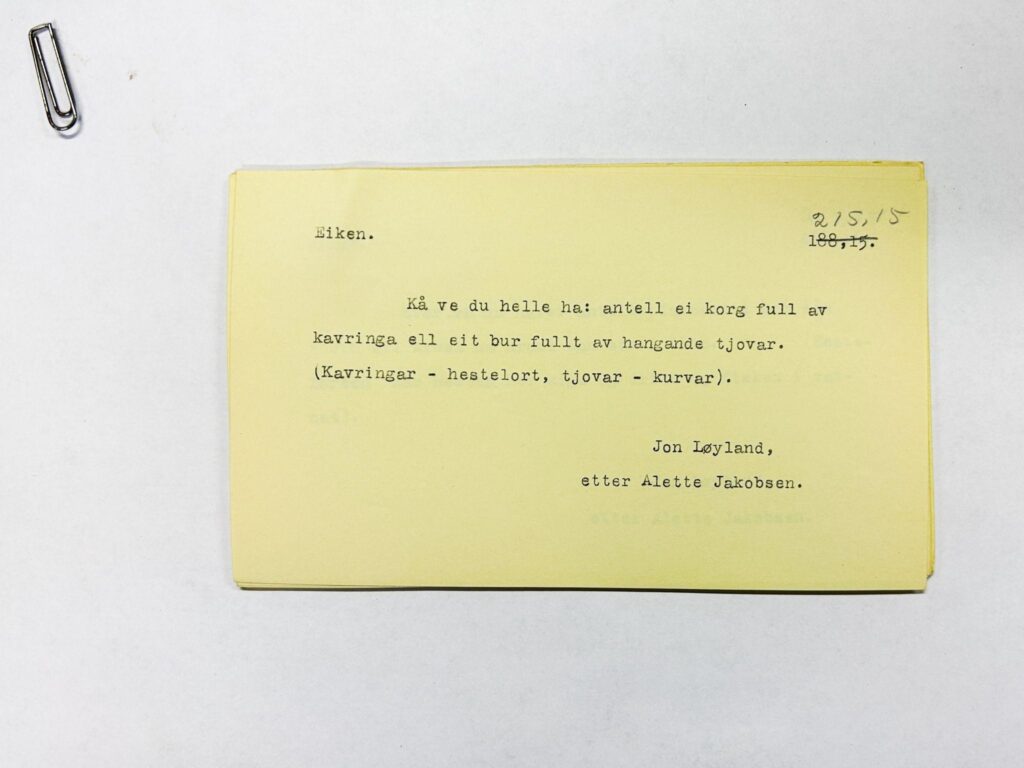
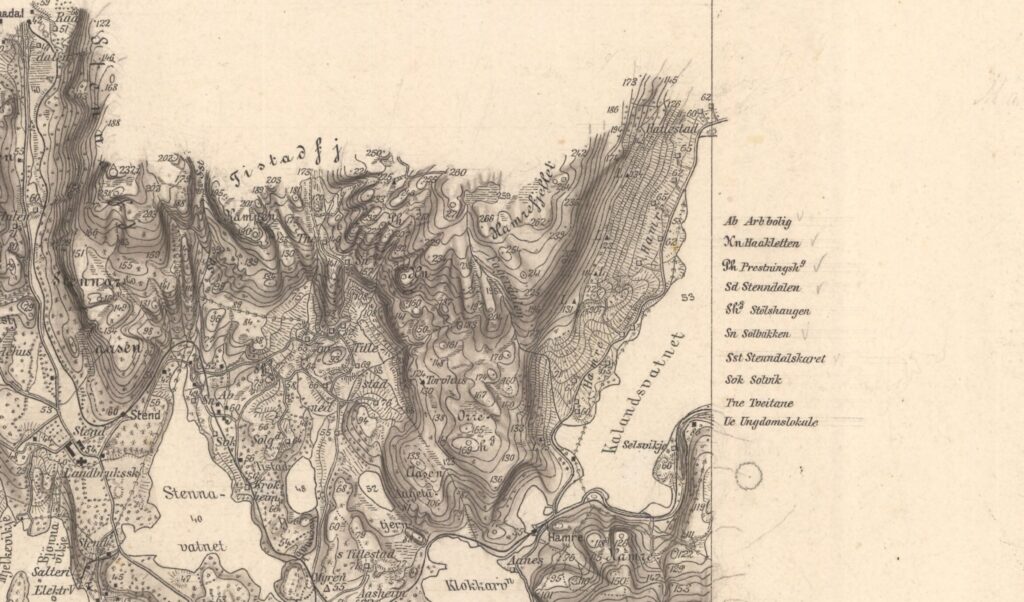
The second archive I worked with was the Etno-Folkloristisk Arciv (EFA) which reopened recently because of the SAMLA project after a decade of closure. This archive had never been explored with a critical making methodology. After multiple archival visits with the incredibly knowledgeable Dr. Kyrre Kverndokk and Angun Sønnesyn Olsen, I was able to explore the aesthetics of the Hannaas collection of folk and fairytale. This work began to shape the narrative structure of my own contemporary, digital folktale, as a genre of interest began to emerge the longer I worked with the materials. The EFA faculty and staff helped me uncover forgotten Bergen fable genres and structures, which in turn helped me contextualize dark messages of the past within the challenging realities of our present.
The genre of the Old Norse riddle became of interest to me, as the structure of time and play was uniquely constructed in the archival materials I found. Riddles allowed me to digitally entangle buried archival folklore, computer learning, and local Bergen storytelling techniques into a responsive folktale that could be co-authored by human, community, and machine. Synthesizing digital design with subversive folklore, I wanted my viewers to directly interact with what philosopher Pierre Bourdieu calls the “field of cultural production» of folktales, connecting dark lessons of the past to the context of today’s grim realities.
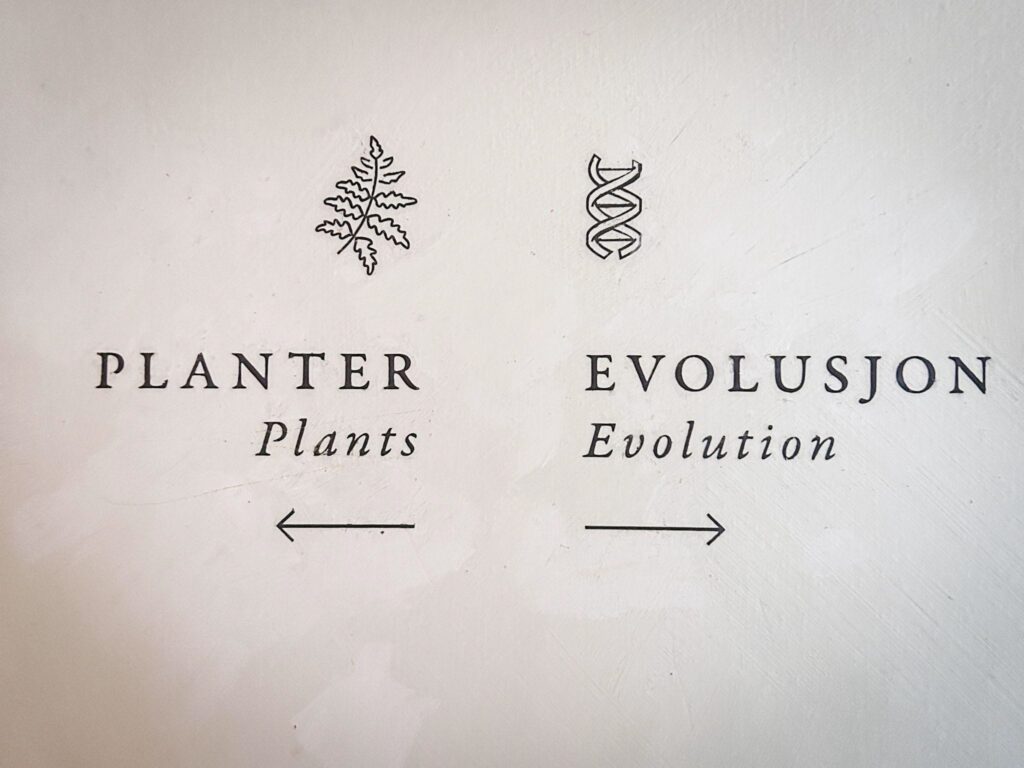
I also drew inspiration from the aesthetics of curation and collection on display at the University of Bergen’s Natural History Museum. In my view, the updated exhibition design of the museum’s curios elevated the strange, the eerie, and the magical within Norwegian biodiversity in the same way I hoped my speculative, folk riddles would. The function of the “weird” in my work should serve a particular social function: exploring the horrific and the unknown from a safe distance (magic). Unlike a static museum display, however, I wanted viewers of my work to be active participants that play a role in the authorship of the tale, with the imaginarium of the story coming from its audience, its audience thus promoted to an active role in the meaning-making.
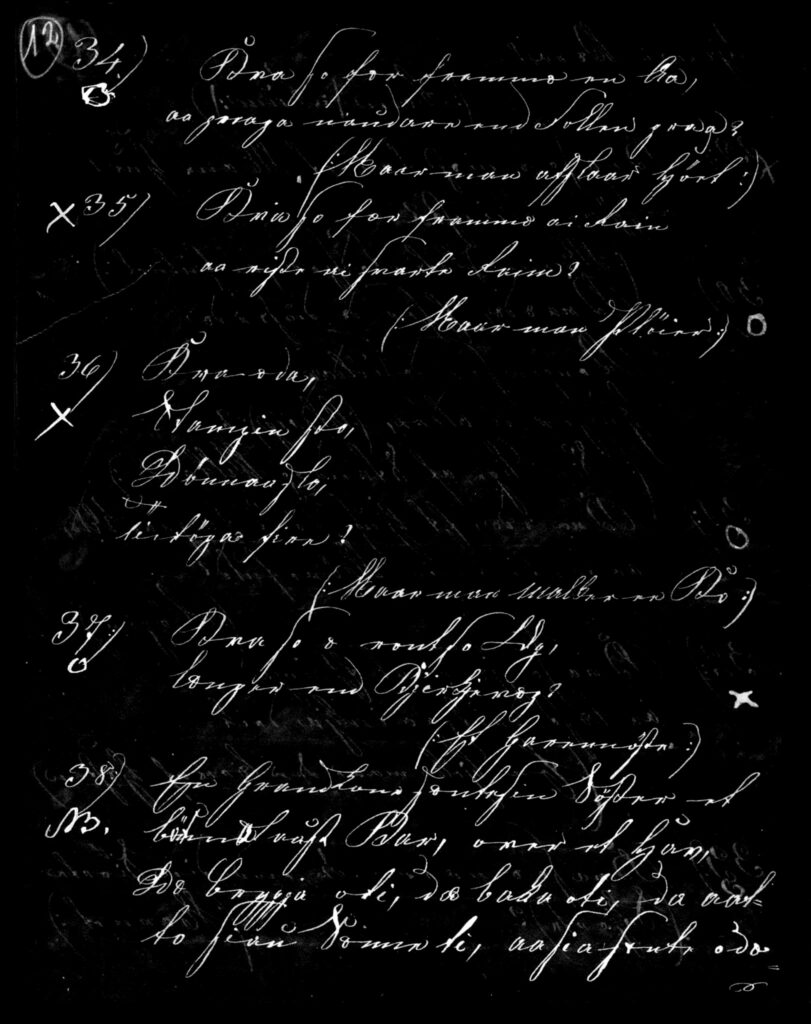
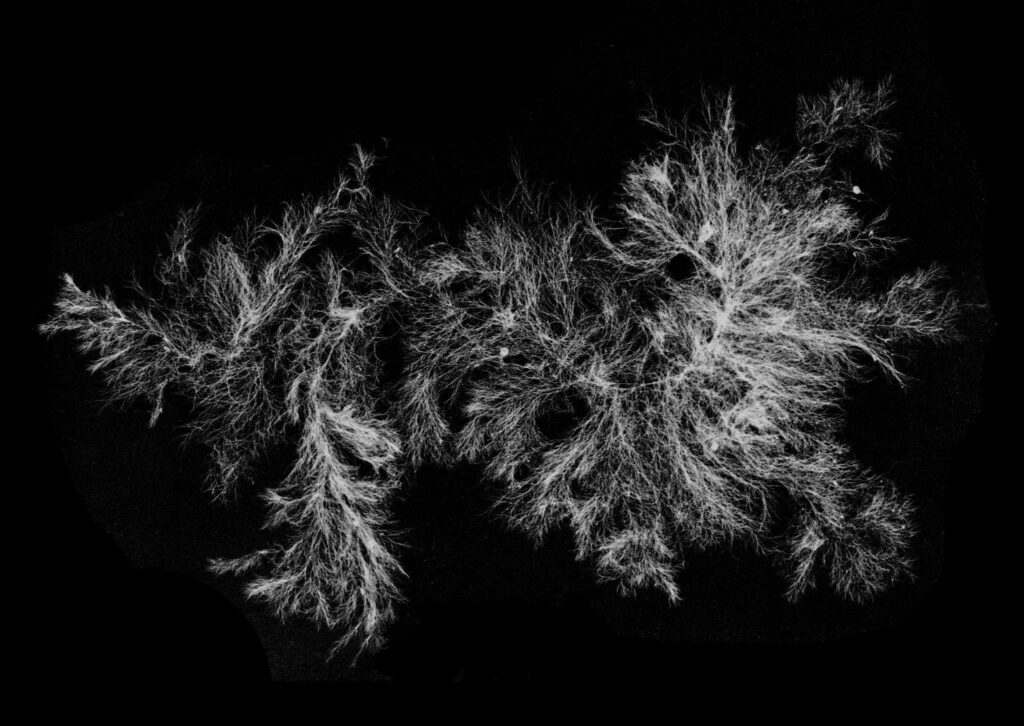
Working with the materials from these aforementioned archives and institutions, I began to animate alternative fairytale worlds. What emerged was a speculative design installation, entitled A Fable of Tomorrows, consisting of digital and interactive objects, at the center of which is a fable from the future.

I exhibited Fables in an international, solo show as part of the UK’s We Invented the Weekend arts and culture festival in 2024. As a phantasmagoric video panorama immerses viewers in visions of different temporalities (from deep time to a lifetime), a mysterious artifact poses Old English-inspired riddles which take more than one human generation to solve. This work meditates on how a long duration of time, one that exceeds human experience, can nonetheless be mediated through play.
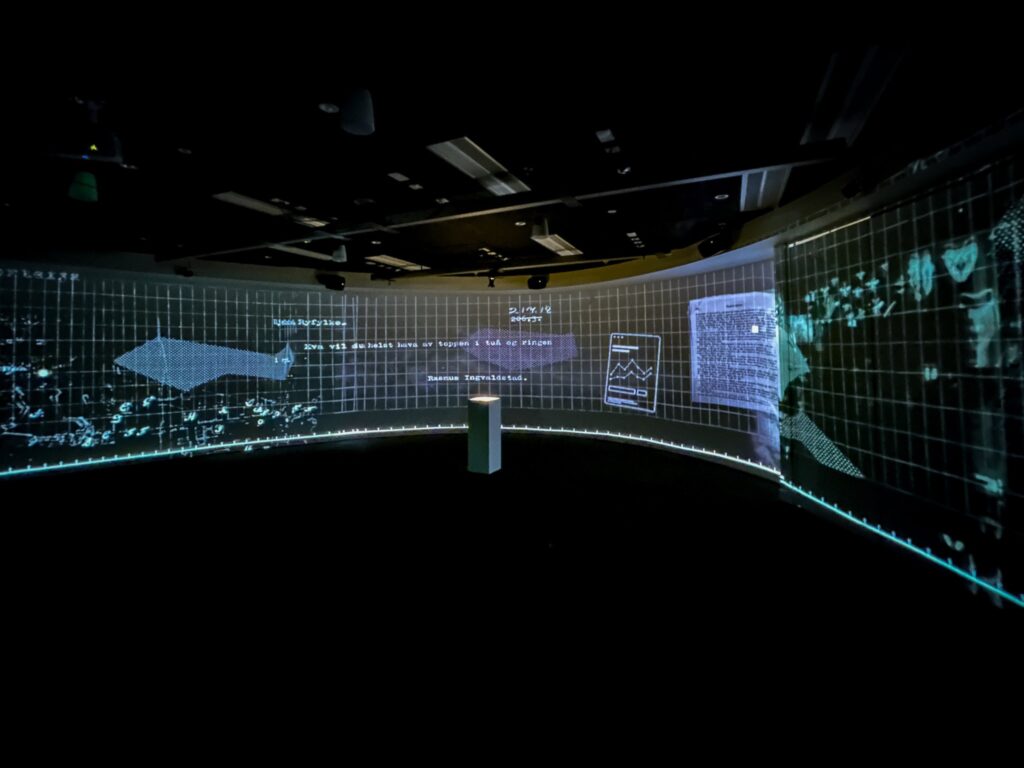
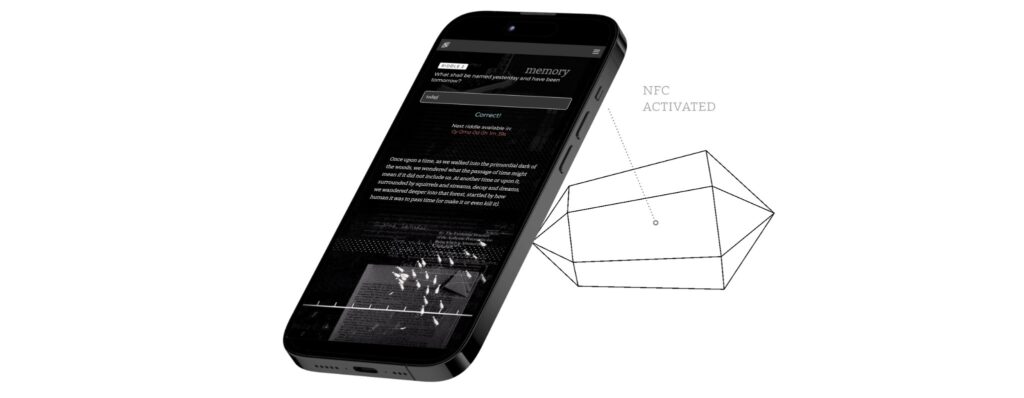
Entering the dark, cave-like installation, a 180° looping and layered video features imagery of deep time, the anthropocene, and abstracted reflections of light. Atmospheric and meditative as much as it is didactic, the immersive video piece offers clues (if one looks closely enough) to the riddle game, further rewarding a slower kind of play.
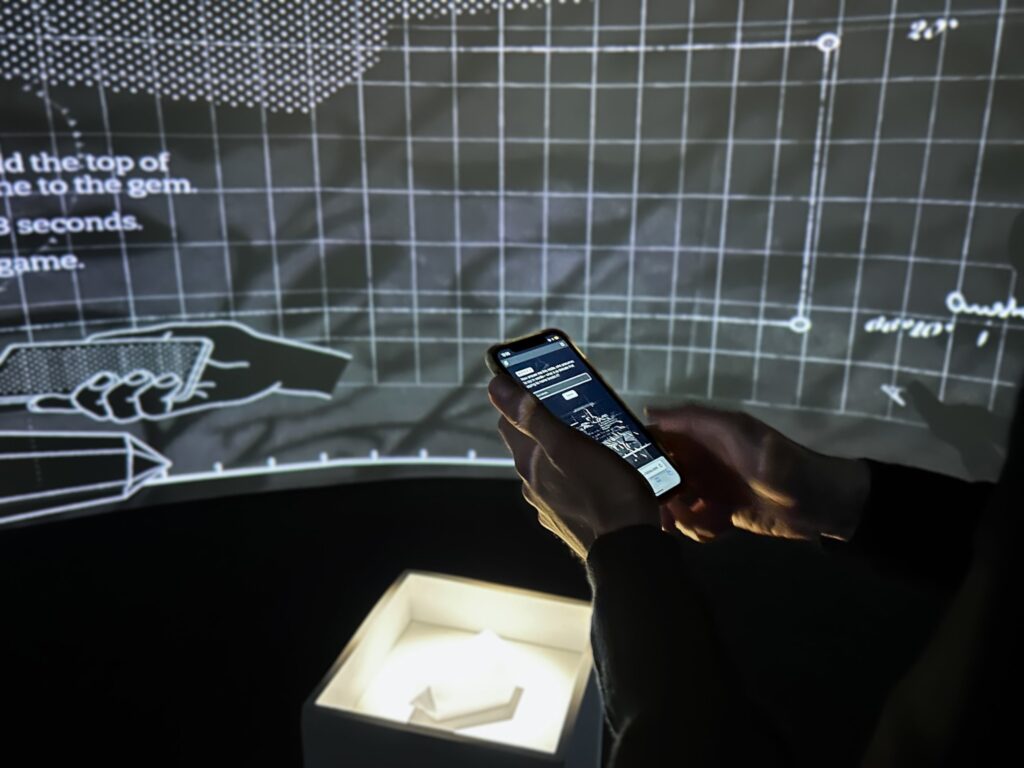
Installed on a central, illuminated pedestal, an encoded paper sculpture activates a viewer’s smartphone (via secretly embedded and programmed NFC chips) allowing a viewer to play the web-based riddle game. Coded with java, html, and css, the game stores the riddle answers, future fable sentences, and future riddles server-side. After solving each riddle, a mysterious sentence from a future fable progressively appears, but the time between riddles increases exponentially, which forces players to slow down.
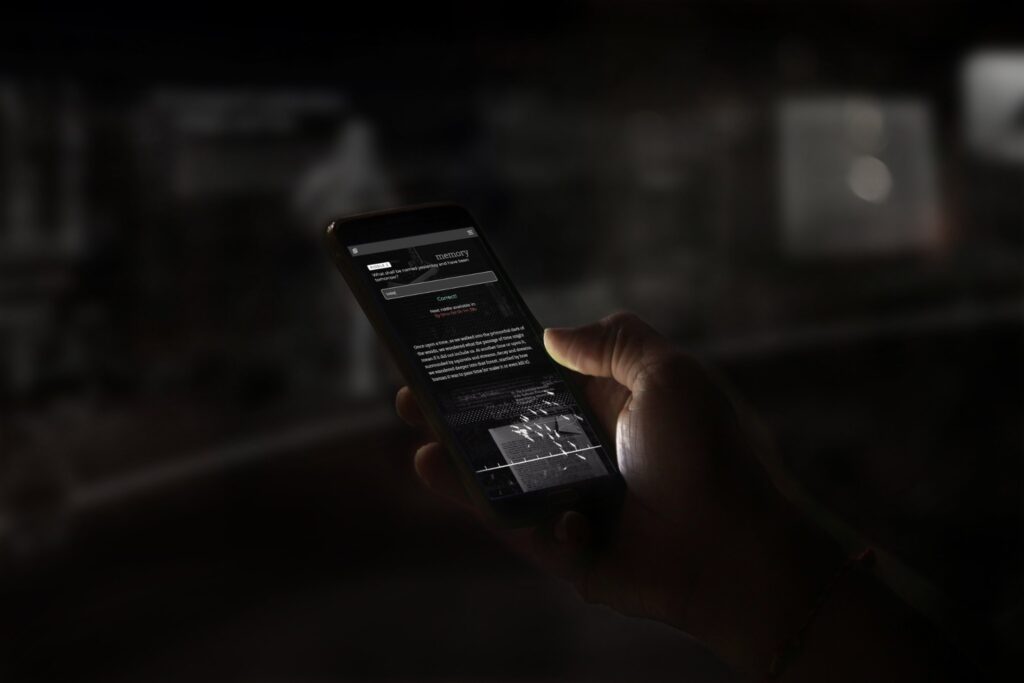
The game is also coded to collect a player’s guesses so that while a player plays, the code is also building a real-time archive of language, behind the scenes. Entries from this archive fade in, ghost-like, behind the game.
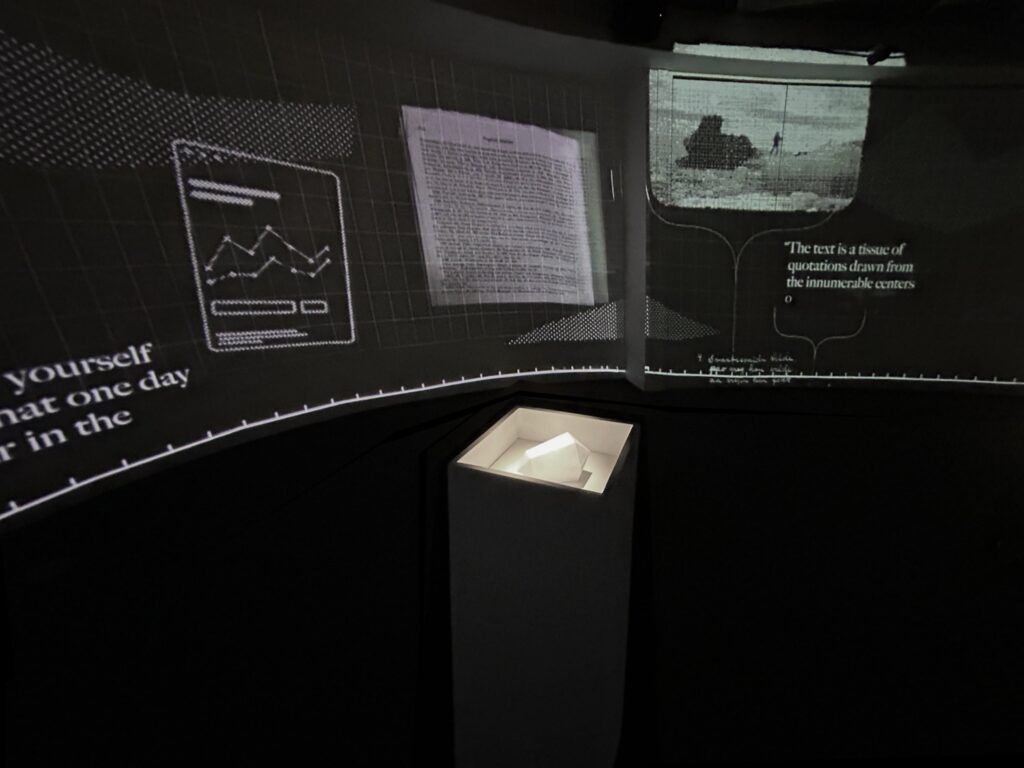
Reflecting on the work and the public’s response to the installation, so far, I continue to be convinced that the essential artistic and social value of design is the point of connection it creates between people. Both my design methodology and classroom pedagogy actively engage broader socio-cultural issues in order to understand nuanced ways of seeing and telling. My work seeks to function like what Lewis Hyde describes in The Gift: an exchange of empathy between artist and audience that becomes a small, but beautiful, bridge built between peoples and societies (for example, one need not speak German to hear the beauty of Mozart). This philosophy of curiosity and humanism is integral to my creative practice, necessitating a flexible design process, and embracing the process of cultural gift-giving at the core of which art and design reside.